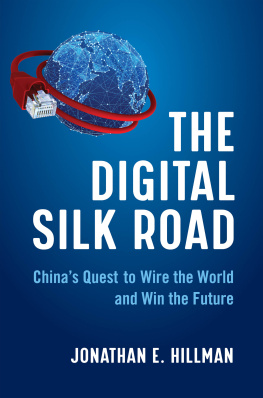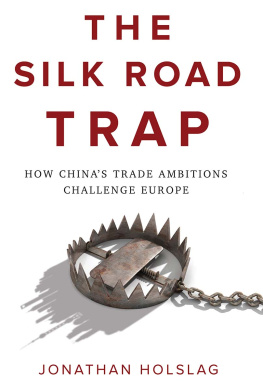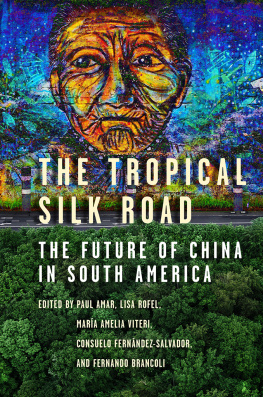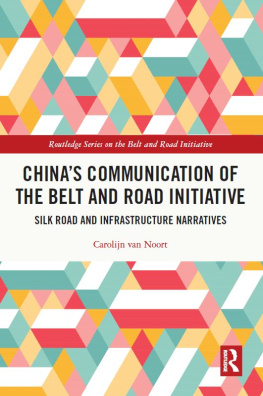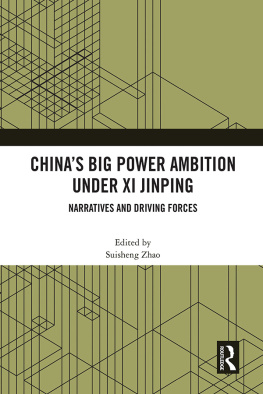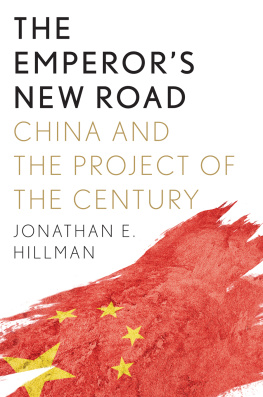For Liz
Contents
This book was born at 195 Broadway, a twenty-nine-story building wrapped with Roman columns in New York Citys bustling financial district. Long before my U.S. publisher, HarperCollins, moved in, it was the headquarters of American Telephone and Telegraph, better known as AT&T, and the site of several historic transmissions: the first sustained transatlantic radio communication in 1923, the first transatlantic phone call in 1927, and the first two-way videophone call in 1930. During the Cold War, AT&T adopted the slogan Communications is the foundation of democracy, and for most of the twentieth century, 195 Broadway stood at the center of an expanding communications empire.
As this century unfolds, communications are racing faster, reaching further, carrying moreand increasingly coming from China. In 2017, Chinese engineers used a special satellite to hold the first intercontinental, quantum-encrypted video conference, a major step toward constructing an unhackable network. In 2018, Huawei and Vodafone demonstrated one of the first 5G wireless calls. The same year, Hengtong Group celebrated foreign sales of 10,000 kilometers of subsea fiber-optic cable, the systems that carry the vast majority of international data. Communications, the Chinese Communist Party (CCP) is proving, does not have a political preference. It is a powerful tool, for liberation or repression, depending on who controls it.
Just three decades ago, China was completely dependent on foreign companies for all these capabilities. Huawei was a middling reseller. Chinas most advanced communications satellites were made in the United States. The worlds subsea fiber-optic cable providers were exclusively from the United States, Europe, and Japan. Lacking these systems, let alone the ability to produce them, Chinas first connection to the global internet came through a Sprint satellite network in 1994. Since then, China has leapt from customer to supplier, from copycat to innovator, from network offshoot to operator.
Chinas rapid rise is overshadowed only by its global ambitions for the next three decades. Chinese leader Xi Jinping has called for his country to dominate advanced technology manufacturing by 2025, to lead standard setting by 2035, and to become a global superpower by 2050. Xi is mobilizing companies to pour resources into developing digital infrastructure at home and sell more of their products overseas through his Belt and Road Initiative. The Digital Silk Road, part of that initiative and the focus of this book, connects Chinas bid for technological independence at home and its quest to dominate tomorrows markets.
History cautions that much more than sales figures are at stake. AT&T applied its expertise to help develop nuclear weapons, a missile warning system, and a secret communications network for Air Force One, among other national security projects. The blessing of the state, implicit or explicit, has been crucial to every twentieth-century information empire, observes Tim Wu, a Columbia Law professor who joined President Bidens National Economic Council, in The Master Switch. Now a new information empire is emerging with vast support from the Chinese state. These pages describe its contours and grapple with its consequences.
While I was writing this book, the stakes became even starker as the COVID-19 pandemic paralyzed the physical world. The streets of New York and so many other cities became quiet, and during the darkest of those days, everything seemed dangerously brittle if not already broken: health systems, supply chains, and financial markets. Digital infrastructure, normally out of sight and out of mind, suddenly felt like the one system that did not fail. It provided a lifeline to family, friends, work, school, food, entertainment, and more. The digital world roared ahead.
Out of necessity, my journey to understand digital infrastructure became even more virtual. Instead of flying to Los Angeles to tour one of the worlds busiest internet exchanges, and the gateway for massive data flows to and from Asia, I took an online tour of the facility and then continued onward to Cape Town to visit one of Africas largest data centersall while eating lunch from my desk. I enrolled in online courses on surveillance systems offered by Chinas largest camera manufacturer, gaining access that would have been difficult, if not impossible, in person. I became a beta user of Starlink, Elon Musks mega-constellation of satellites that aims to deliver broadband to the farthest reaches of the Earth.
These virtual excursions had their limits. I couldnt wander, as I had grown accustomed to doing while visiting Chinese infrastructure projects around the world before the pandemic. I couldnt bump into fellow classmates between lessons and learn about them and why they were taking the course. Even the most high-definition video cant capture the smell of a place or the feel of rain, sun, and wind. Yet the opportunities were still amazingthe information I accessed, the places I saw, the people I met, all safely amid a global pandemic.
But life did not migrate online for everyone, nor in the same way for those privileged to have access. Roughly half of humanity still lacks internet access. In China, nearly a billion people have access, but foreign connections are so restricted that most people are essentially using a separate internet. The pandemic also opened the floodgates for more pervasive and sophisticated forms of surveillance. Chinese surveillance cameras landed everywhere, from the European Parliament to Alabamas public schools, armed with thermal imaging to detect fevers.
With its reach expanding rapidly, China may seem destined to host the headquarters of the next information empire. Huaweis sprawling European-style campus in Dongguan, an hour outside Shenzhen, already makes AT&Ts Roman touches look modest. But the United States still occupies a position of strength. Among its many advantages are world-leading research universities, innovative companies, deep pools of private capital, openness to immigrants, and a global network of partners and allies. The question is whether the United States can rise to the challenge, rebuilding at home while leading a coalition of countries that offers real benefits to the developing world.
After a year of remote work, the very idea of a physical headquarters feels outdated. But this journey has taught me that the digital world is becoming even more heavily dependent upon physical systems. Nearly every device, and every network node, still falls within the physical or legal boundaries of a sovereign state. As more of daily life depends on digital infrastructure, and more physical objects are connected, it is not merely different versions of the internet that are emerging but different worlds. Communications has a foundation, and the competition to control it is underway.
The Center for Strategic and International Studies (CSIS) is a bipartisan, nonprofit policy research organization dedicated to advancing practical ideas to address the worlds greatest challenges.
CSIS does not take specific policy positions; accordingly, all views expressed herein should be understood to be solely those of the authors.
Center for Strategic and International Studies
1616 Rhode Island Avenue, NW
Washington, DC 20036
202.887.0200
www.csis.org
If history is written by the victors, so are fantasies of the future. Among the most alluring and dangerous of these tales, born in the blinding glow of Cold War victory, was the idea that communications technology would inevitably promote liberty. As former U.S. president Ronald Reagan told a London audience in 1989, More than armies, more than diplomacy, more than the best intentions of democratic nations, the communications revolution will be the greatest force for the advancement of human freedom the world has ever seen.

